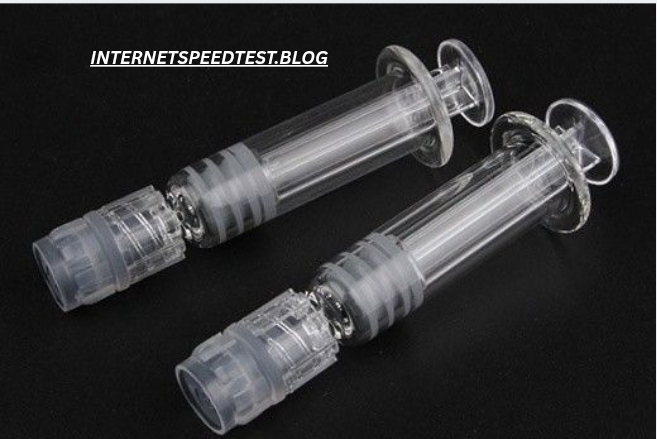Introduction
In recent years, clear aligners have revolutionized orthodontics. Unlike traditional metal braces, aligners offer a discreet, removable, and comfortable solution to straightening teeth. Among the many well-known brands, diy invisalign has become the industry leader. However, with growing popularity and high costs associated with professional treatment, many people have turned toward the idea of DIY Invisalign or do-it-yourself aligners.
The term “DIY Invisalign” often sparks curiosity. Can you really straighten your teeth at home without professional guidance? Is it safe? What are the pros and cons? This article provides an in-depth look at the DIY Invisalign trend, its advantages, risks, and safe alternatives.
What is DIY Invisalign?
DIY Invisalign refers to the practice of attempting to create or use clear aligner treatments without the direct involvement of a licensed orthodontist or dentist. It usually involves:
- Ordering aligners online from direct-to-consumer companies.
- Taking your own dental impressions at home.
- Using third-party aligner kits that promise cheaper alternatives to Invisalign.
- In some extreme cases, attempting to make homemade aligners using molds, plastic sheets, or 3D printers.
While these options may seem affordable compared to Invisalign, they come with significant risks if not monitored by professionals.
Why Are People Searching for DIY Invisalign?
1. High Cost of Invisalign
The average cost of Invisalign ranges between $3,000–$8,000, depending on complexity. Not everyone can afford this, which drives people to search for cheaper alternatives.
2. Convenience
Some individuals prefer ordering aligners online rather than making multiple visits to the dentist. The promise of home delivery and self-treatment looks appealing.
3. Cosmetic Urgency
People who want quick fixes for weddings, parties, or professional appearances often look for fast, inexpensive ways to align their teeth.
4. Rise of At-Home Orthodontic Companies
Brands like SmileDirectClub, Byte, Candid, and others have heavily marketed DIY-like aligner solutions. This has blurred the line between professional Invisalign treatment and at-home alternatives.
How Invisalign Differs from DIY Aligners
1. Professional Supervision
- Invisalign: Always requires consultation and monitoring by licensed orthodontists.
- DIY Aligners: Often lack ongoing professional care.
2. Customization & Precision
- Invisalign uses 3D scans, digital treatment planning, and AI-powered adjustments.
- DIY aligners rely on self-impressions, which can be inaccurate.
3. Safety
- Invisalign ensures gum health, bone support, and bite correction are considered.
- DIY methods risk improper movement of teeth, gum damage, or bone loss.
4. Treatment Complexity
- Invisalign can handle mild to severe orthodontic cases.
- DIY aligners generally target only mild cosmetic fixes.
The Process of DIY Invisalign (Step-by-Step)
If someone chooses a DIY aligner company, the process typically looks like this:
- Ordering a Kit Online – You receive impression materials or a 3D scan option.
- Taking Impressions at Home – You bite into putty or use a scanner, then send results back.
- Aligner Fabrication – The company designs aligners and ships them to you.
- Wearing the Aligners – You switch trays every 1–2 weeks.
- Remote Monitoring (Optional) – Some companies offer tele-dentistry, but not all.
Risks of DIY Invisalign
1. Inaccurate Impressions
Improper impressions may lead to poorly fitting aligners, causing discomfort or tooth damage.
2. No Clinical Evaluation
Without x-rays and dental exams, hidden problems like gum disease or cavities remain untreated. Moving teeth in such conditions worsens dental health.
3. Limited Treatment Scope
DIY aligners cannot fix complex orthodontic problems such as:
- Severe crowding
- Overbites and underbites
- Jaw alignment issues
4. Potential for Permanent Damage
Incorrect movement of teeth can result in:
- Tooth loosening
- Bone loss
- Gum recession
- TMJ (jaw joint) pain
5. Lack of Accountability
If something goes wrong, most DIY aligner companies offer little to no in-person support.
Benefits of DIY Invisalign
Despite risks, many still consider DIY Invisalign because of its potential advantages:
- Cost-Effective: Typically 50–70% cheaper than Invisalign.
- At-Home Convenience: No repeated dental visits.
- Faster Start: Kits are delivered quickly.
- Mild Case Success: Works reasonably well for very minor alignment issues.
DIY Invisalign vs Professional Invisalign: Cost Comparison
| Treatment Option | Average Cost (USD) | Professional Supervision | Suitable For |
|---|---|---|---|
| Invisalign | $3,000–$8,000 | Yes (orthodontist) | Mild–Severe |
| DIY Aligner Companies | $1,200–$2,400 | Limited or none | Mild cases |
| Homemade Aligners (unsafe) | <$500 | None | Unsafe |
The Dangers of Truly Homemade Aligners
Some people attempt to make DIY Invisalign using molding trays, hot plastic, or 3D printing. This is extremely unsafe. Unlike licensed labs, home setups lack medical-grade materials and precision. Homemade aligners can:
- Trap bacteria, causing gum infections.
- Move teeth too quickly, damaging roots.
- Cause misalignment instead of correction.
Dentists strongly warn against self-made aligners.
Popular At-Home Aligner Brands (DIY Invisalign Alternatives)
While not true Invisalign, these brands market themselves as affordable DIY aligner solutions:
- SmileDirectClub – One of the pioneers of at-home clear aligners.
- Byte – Promises faster results using “HyperByte” vibration technology.
- Candid – Offers more professional oversight compared to others.
- AlignerCo – Known for being one of the cheapest options.
- NewSmile – Targets minor alignment fixes.
These companies vary in quality, safety, and customer support.
Expert Opinions on DIY Invisalign
Orthodontists generally caution against DIY aligners. The American Association of Orthodontists (AAO) has issued warnings about at-home orthodontic treatments without professional monitoring. They emphasize that:
- Teeth are living structures with roots, nerves, and surrounding bone.
- Moving teeth incorrectly can cause permanent harm.
- Professional care ensures that orthodontic treatment aligns not just for looks, but for function and health.
Safer Alternatives to DIY Invisalign
If Invisalign feels too costly, here are safer alternatives instead of risky DIY methods:
- Orthodontist-Supervised Payment Plans
Many dentists offer monthly payment options that make Invisalign affordable. - Dental Schools
Teaching institutions often provide Invisalign or braces at reduced costs. - Insurance Coverage
Some dental insurance plans cover part of the cost for Invisalign. - Less Expensive Aligner Brands with Dentist Oversight
Some companies partner with local dentists for scans and monitoring.
Tips if You Are Considering DIY Invisalign
If you’re still drawn to DIY aligners, here are safety tips:
- Choose a reputable company with licensed dentists involved.
- Avoid any method that requires making aligners yourself.
- Always get a dental exam before starting.
- Monitor your gums, bite, and teeth closely.
- Stop immediately if you feel pain or tooth mobility.
Real-Life Stories: Successes and Failures of DIY Invisalign
Success Case
Sarah, 27, had slight gaps between her front teeth. She used an at-home aligner company for 6 months and saw positive results. Since her case was minor, the treatment worked.
Failure Case
John, 35, tried DIY aligners without consulting a dentist. His teeth moved incorrectly, leading to jaw pain and increased gaps. Eventually, he needed costly corrective orthodontics.
Future of DIY Invisalign
The demand for affordable orthodontic care will keep growing. Future trends may include:
- AI-driven treatment plans with remote monitoring.
- Hybrid models combining at-home aligners with occasional dentist visits.
- Safer 3D printing technology regulated by dental boards.
Still, professional oversight will likely remain essential for safe and effective results.
Conclusion
The idea of DIY Invisalign is attractive because it offers affordability and convenience. However, it carries significant risks if done without professional supervision. While mild cosmetic cases may benefit from at-home aligner companies, attempting true do-it-yourself aligners is unsafe and potentially damaging.
For those seeking straighter teeth, the safest route is still professional Invisalign treatment or a reputable dentist-approved alternative. In the long run, investing in proper care protects both your smile and your dental health.




